Sweden's tank industry was in crisis in the second half of the 1940s. On one hand, the middle of this decade was a time when Swedish self propelled artillery thrived. That is when the Swedish army finally received assault guns, tank destroyers, and SPAAGs. However, the tank program lagged behind. Sweden's luck ran out with the Strv m/42. Pricken, LS 46, Leo, all of these projects remained on paper. Attempts to build a new tank weighing between 25 and 30 tons encountered various problems. A way out of this dead end appeared in the early 1950s, which led to two interesting heavy tank projects: the EMIL and the KRV (Kranvagn).
IS-3 killer
The Swedish military had a chance to inspect a Soviet T-34 in Finland in the summer of 1943. This inspection triggered a program to replace the Strv m/42. However, time went on, and tank development did not stand still, especially Soviet tank development. The T-34 was replaced with the T-34-85 in 1944. The heavy IS-2 tank appeared on the front lines. However, Sweden knew almost nothing of these tanks, at least until the end of the war.
Sweden began receiving tanks from various nations after the war. Tanks from Great Britain and the US began arriving in the country. Thanks to diplomatic ties with France, Sweden obtained some amount of German tanks and SPGs, including a Tiger II. The study of tanks purchased from abroad allowed them to fill the information vacuum that formed during the war.
Even the newest Swedish designs fell behind late war tanks from other countries. For example, the 75 mm L/50 cannon from the Pricken and Leo tanks was about equal to the German 7.5 cm KwK 40 L/48. It was useful as a means against medium tanks, at best. Meanwhile, IS-3 tanks drove in a triumphant parade along the streets of Berlin on September 7th, 194. Their appearance was a serious shock.
The tank that spent only a year and a half in production caused a panic in the West. The IS-3 was considered a reference point for any modern tank for the next seven years. Special heavy tanks were built to fight it, including the T43 (future M103) and the Conqueror. Even the British FV 215 tank destroyer with an enormous 183 mm gun was built for one task: to kill the IS-3.
Oddly enough, the hype around the IS-3 reached Sweden much later. This can be seen from their plans regarding new vehicles. The requirements for new tanks differed little from the requirements for the Pricken until 1950. At a discussion of a prospective tank in 1949 its gun was still set at 75 mm. It was only required to penetrate 75 mm of armour at 1000 meters. The Swedes also returned to the idea of a 105 mm gun with a muzzle velocity of 650 m/s. The mass of the tank would be 20 tons, later raised to 25. The tank would be designed on the chassis of the Strv m/42. In other words, the previously rejected Lansen concept was resurrected.
The only brand new vehicle in development in the late 1940s was the 15 cm kv fm/49 SPG. It was created as a part of work to re-equip Sweden's armed forces with large caliber long range artillery. The Swedish army needed and SPG that could complement its 15,2 cm kan m/37. The requirements were unusual: a mass of no more than 30 tons (the weight limit for many bridges), high speed, and a high rate of fire.
The project was given to Bofors, which presented a draft on January 21st, 1949. Correspondence contains many names for this SPG: 15 cm kan självgående lavettage (152 mm gun on a self propelled chassis), VK-150-5, and 15 cm kanonvagn fm/49. The vehicle, similar in concept to American SPGs, was very mobile. As the requirements stated, its mass was 30 tons, and its top speed was estimated to be 40 kph. The length of the gun was increased to 50 calibers, the muzzle velocity to 850 m/s, and range to 25 km.
The rate of fire of the 15 cm kv fm/49 is much more interesting. According to calculations it was 15 RPM, which is fantastic for that caliber. This rate of fire was achieved with an automatic loader and one piece ammunition. The gun would have a 5 round magazine that could be quickly topped up. A sum of 425,000 Swedish kroner was allocated for this project. Erik Gillner and Sven Berge, who will become Sweden's best known tank designer in the future, supervised the project from KATF's side.
The tank program remained in this state until the summer of 1950. However, Swedish high command began looking at British and American tanks, namely the M46 Patton and Centurion Mk.3. They did not meet Sweden's requirements for an armoured vehicle, but at least they existed in metal and were in mass production.
Sweden finally received information about the IS-3 in March of 1950. The letters «IS» were once again included in plans for future tank development on August 28th, 1950. Approximate characteristics of the Soviet heavy tank were also announced. According to Swedish estimates, its armour was 120-150 mm thick.
It was clear that even the 105 mm gun still in development was not enough to fight this new tank, a completely new gun was needed. The new gun also had a caliber of 105 mm. The length of the barrel was limited to 40 calibers, with a muzzle velocity of about 930 m/s. According to calculations, it would penetrate 190 mm of armour from a kilometer away, or 150 mm at 60 degrees. The rate of fire was estimated at 8-10 RPM, but an automatic loader could raise that to 20-30 RPM.
Requirements for a new tank that would have received that gun were finished on November 8th, 1950. It was still based on components from the Strv m/42, its mass was 25 tons, and power to weight ratio was 18 hp/ton. The requirements were designed with new information on Soviet tanks in mind, which was received in September of 1950. This information covered the T-34-85, T-44, IS-3, and even the IS-4. The same IS-3 was hiding behind that last index, but nevertheless, a new generation of Swedish tank designs began.
With a faint French aroma
It's possible that the new tank could have been a continuation of the Lansen concept, which was being reworked at the moment to meet Swiss requirements. The Lansen just reached 25 tons, and an 84 mm gun was being installed instead of a 75 mm gun (a Swiss copy of the British 20-pdr). The dimensions of the turret allowed for the installation of a 105 mm gun with a magazine autoloader, plus it was more than a meter shorter than the 84 mm gun, which reduced the overhang. However, these are all guesses, since history took a different turn.
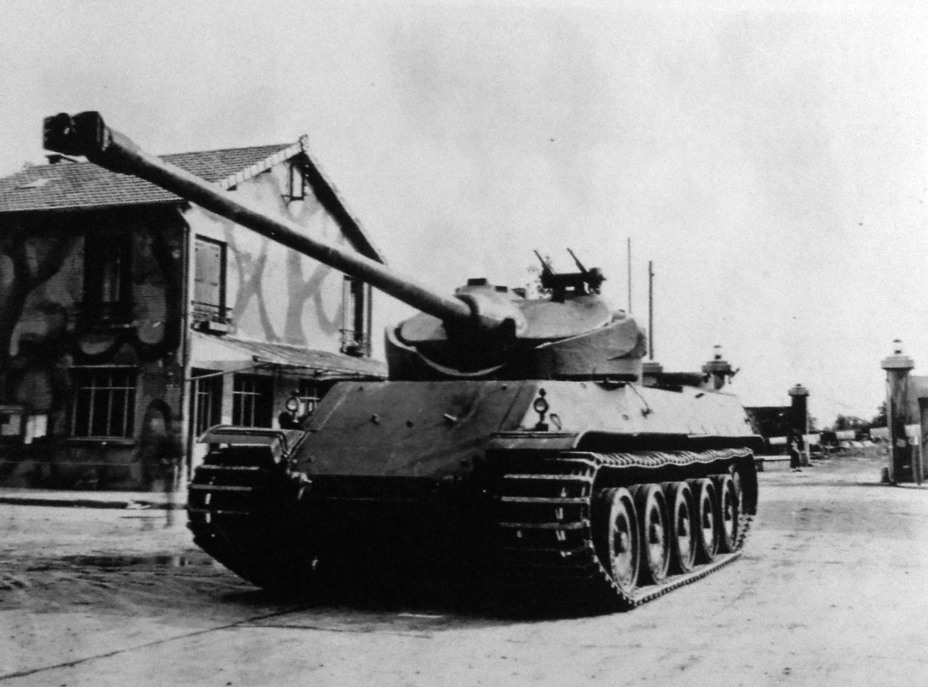
KATF specialists, including Erik Gillner, first visited France in October of 1946. The Swedes purchased several German vehicles on this trip. The French and Swedes cooperated closely, which resulted, for example, in purchases of 170 French 155 mm Obusier de 155 mm Mle. 50 howitzers. France saw Sweden as a potential buyer for its tanks.
It's not surprising that KATF received detailed information about the French AMX M4 medium tank. Around this time, the tank was equipped with a 100 mm gun, and its name was changed to Char Moyen de 50 tonnes AMX or AMX 50. The characteristics of this tank were unsuitable for Sweden, since it weighed almost 55 tons at that point and was larger than the already sizeable Centurion. KATF was much more interested in the concept of a tank with variable armour thickness and a FAMH oscillating turret. The loading mechanism and ammunition in the turret bustle reduced its size and mass. Later, in July of 1951, Sweden had a chance to study another novelty with an autoloader: the light AMX 13 tank.
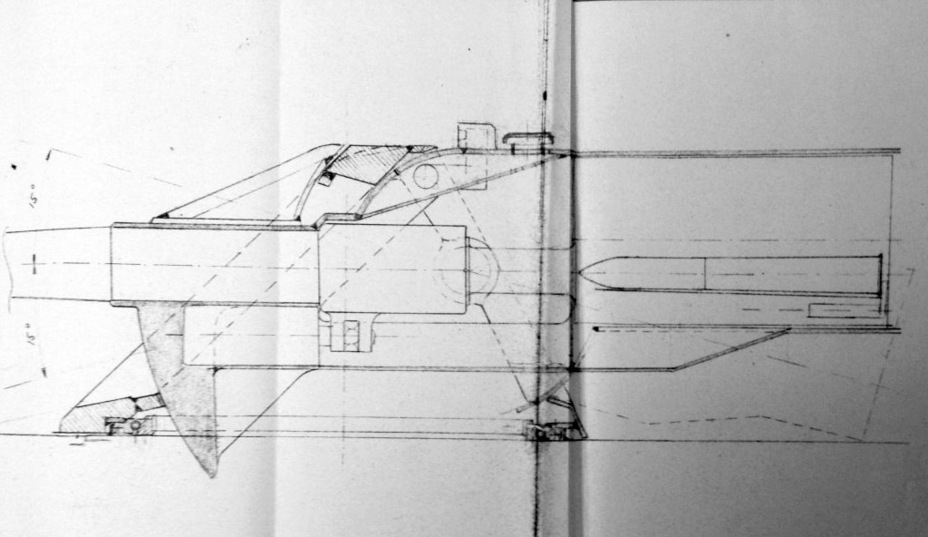
Familiarization with French tanks directly impacted further Swedish tank building. At the same time, it would be incorrect to call the new Swedish tank a copy of the AMX 50. The overall concept of a tank with an oscillating turret, automatic loader, and rear transmission came from France, but the result of the work of Landsverk, Bofors, and KATF was completely different. Despite some opinions, the SPG was not built on the tank chassis. It was the new tank that was built while looking back at the 15 cm kv fm/49.
The draft project of a new tank, called EMIL, was finished by September of 1951. It turned out to be different from previous Swedish tanks. It was relatively short (5.7 meters in length), low (just under 2.5 meters in height), with an estimated mass of 28 tons. An air-cooled opposite 8 cylinder Volvo engine was proposed. Its output would reach 550 hp and give the EMIL a top speed of 55 kph.
The AMX 50 and EMIL both had oscillating turrets, but the EMIL was very original. With a medium tank's weight, it had armour like a heavy tank (70-120 mm front hull, 125-200 mm turret). The crew consisted of only three men. Despite the visual similarity to the FAMH turret, the EMIL had a different autoloader. Only the central part and the rear of the turret oscillated, the front was still. This made the EMIL's turret more resistant to enemy shells and made it difficult to jam. The EMIL also had high gun depression: up to 14 degrees.
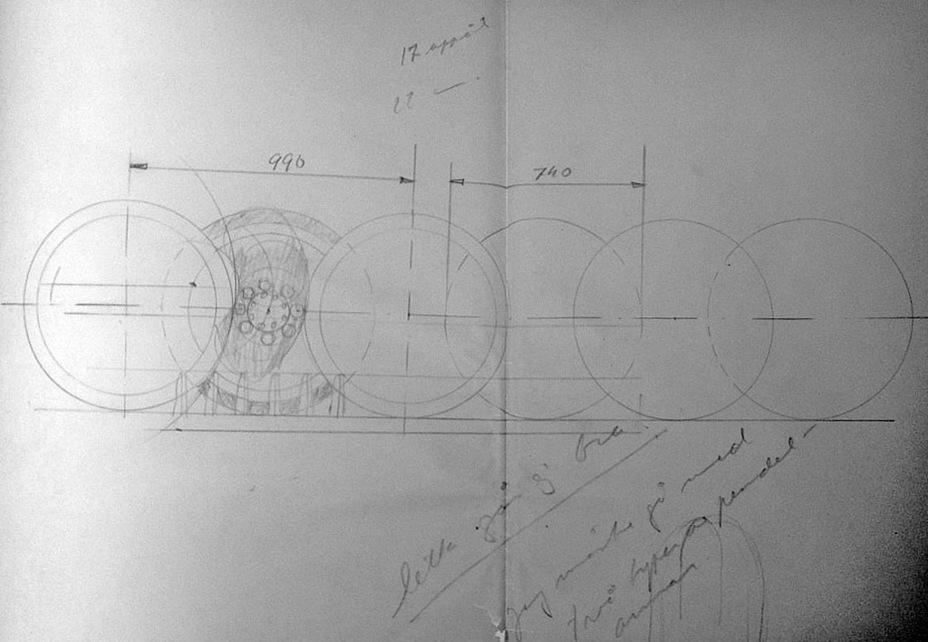
The armament of the EMIL is worth a separate mention. It consisted of a 120 mm L/40 gun and two coaxial machineguns. This weapon was no coincidence. It was discussed in June of 1951. The choice of caliber was due to the fact that the gun would fire HEAT instead of AP shells. Their penetration was enough to knock out Soviet heavy tanks. The muzzle velocity required was less than for an AP shell, which allowed the gun to be relatively short.
Two more guns, 75 and 105 mm, were also considered, but with a much longer barrel than any aforementioned design. As for the 120 mm gun, its rate of fire was up to 40 RPM. This was achieved with two magazines with 8 one piece rounds: one with HEAT and one with HE. The total ammunition capacity was 32 rounds.
The appearance of a draft project alone did not mean that the tank would go into production. It would have to be designed from scratch, and even the simplest estimates showed that it would take too long. A schedule was composed at Bofors while a gun was being chosen. It predicted that a prototype would be ready in 1955, trials would take place in 1956, and production would begin two years later.
Meanwhile, work on the EMIL continued, and the tank began to gain weight. Its mass approached 35 tons by the fall of 1952. Various technical solutions were developed, including «German style» road wheels copied from the AMX 50. However, Kniepkamp's interleaved road wheels did not make it past sketches. Work on alternatives to the 120 mm gun continued. Bofors presented their 105 mm gun with a rate of fire of 30 RPM and 14 round magazines (full ammunition capacity of 28 rounds). The length of the barrel grew to 67 calibers and the muzzle velocity increased to 1080-1340 m/s. Another gun appeared in October, the 15 cm L/40. Like the 120 mm gun, it would fire HEAT shells. The amount of shells per magazine was decreased to 12, with 24 shells in total.
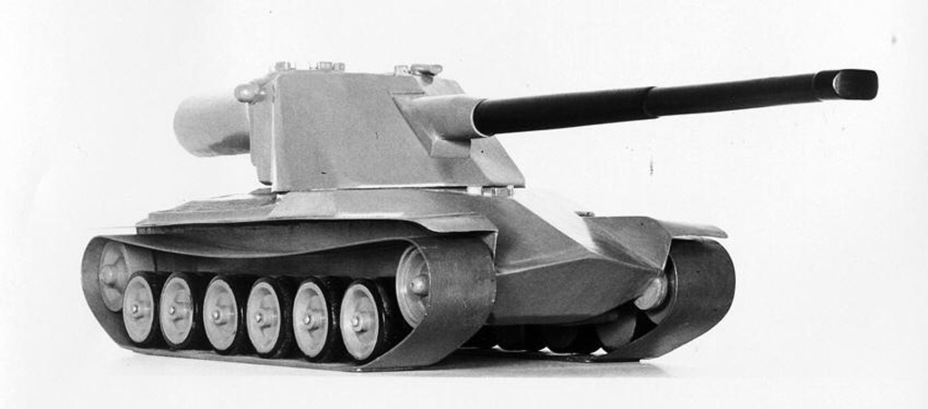
This growth of the armament could not have happened without an effect on the tank, and it had to be redesigned. Three variants were defined: E1, E2, and E3. Sweden could allow this, since the «engine hunger» was resolved to some degree.
A deal with the American Continental company was made. Sweden gained access to a wide spectrum of tank engines, including the opposite AOS-895 (installed on light M41 tanks), as well as the V-shaped AV-1195, AVS-1195, and AV-1790, with output of 540, 665, and 810 hp respectively.
The first variant of the EMIL had a 120 mm gun, 6.4 meter long hull, and a mass of 30.7 to 35.5 tons. It would have an AOS-895 engine. The calculated top speed was 48 kph.
The EMIL E2 was 10 cm wider and taller, which allowed it to fit the more powerful AV-1195 and AVS-1195 engines. The mass varied from 34.1 to 39.2 tons, and the speed ranged from 45 to 55 kph, depending on the engine. The armour also grew to 145 mm on the hull and 170 mm on the turret.
The EMIL E3 was the largest and heaviest. The length of the hull was 6.7 meters, and the height and width were another 10 cm larger than the E2. This increase was to accommodate the AV-1790 engine, which was also used in American heavy tanks. The Swedish tank was clearly approaching the heavy tank range. Its mass varied from 36.4 to 41.8 tons, and the thickness of its side armour increased from 30 to 40 mm in the hull and from 60 to 80 mm in the turret. The more powerful engine theoretically allowed a top speed of 60 kph. This version was the one that was approved.
Unnecessary giant
Work on the tank continued after requirements were finalized. Bofors, who was developing the armament, called the tank «Project 6400». Work was moving in two different directions, since two guns had to be built instead of just one. The deadlines also moved up. A prototype was not expected before October of 1956. In Landsverk correspondence in 1953, the tank was called a tankette for added secrecy. The idea of a 41-42 ton tankette is rather comical.
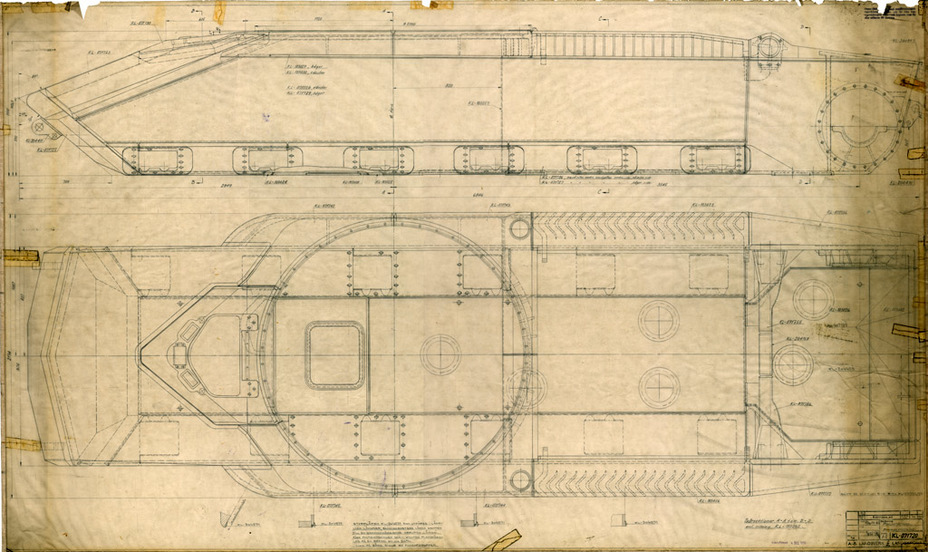
The Swedish military could no longer wait. Negotiations with the French began to purchase AMX 13 tanks. Trials of one tank (currently on display at the Arsenalen museum) took place, but the Swedes were disappointed. General Carl August Ehrensvard, the commander of the Swedish army, considered the vehicle to be an excellent tank, just not for Swedish conditions. A Swedish delegation headed by Gillen had to recall an order for 300 AMX 13 tanks in April of 1953.
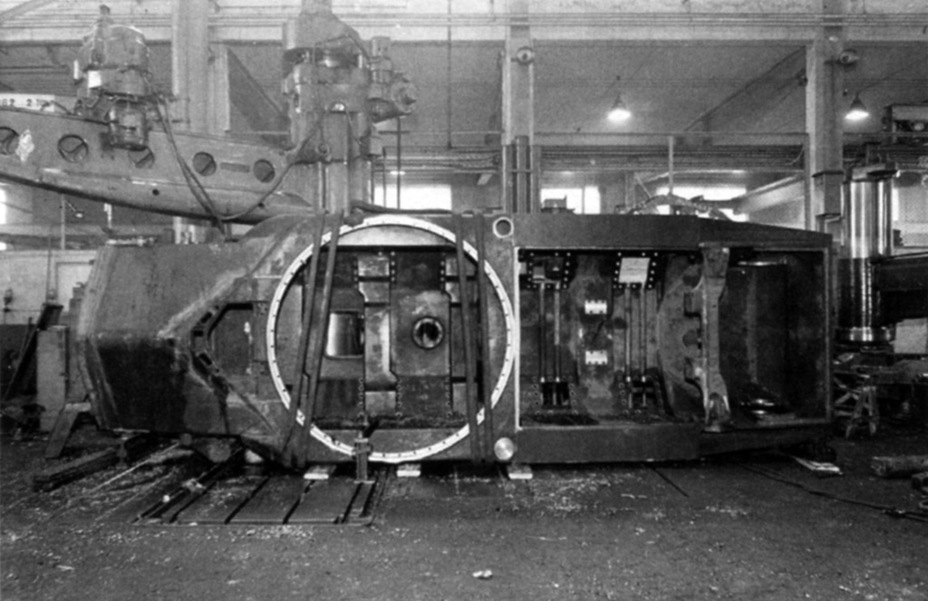
Negotiations with the British went better: the first 6 Centurion Mk.3 tanks arrived on May 2nd, 1953. They weren't cheap; each tank cost 576,000 Swedish kroner (39,600 pounds Sterling), and the price grew to 845,000 kroner for the fully loaded option (it was later somewhat reduced). The French weren't much cheaper at 700,000 kroner per fully equipped tank. The Centurion Mk.3 was accepted into service under the index Strv 81. 80 of these tanks were purchased, and 350 British tanks of various types were bought in total. The ten year long quest for a new Swedish tank was finished.
Meanwhile, work on the prospective heavy tank continued.
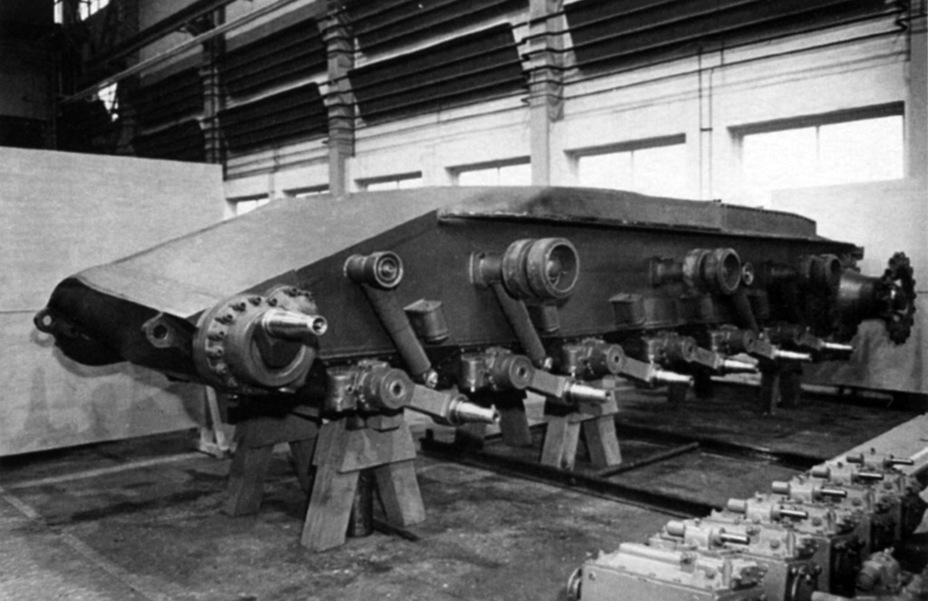
Landsverk finished their work on the «tankette» towards the end of 1954. According to plans, two experimental hulls would be built by May-June of 1956. Only one was authorized, as the work on «Project 6400» at Bofors hit a dead end. The 105 mm gun was considered too weak for such a tank, and problems arose with the 150 mm gun's ammunition. Bofors engineers also run into issues with the stabilizer in 1954.
The heavy tank program could have been closed here, but there was a good reason to continue the work. An SPG was being designed on the chassis, and nobody was cancelling that.
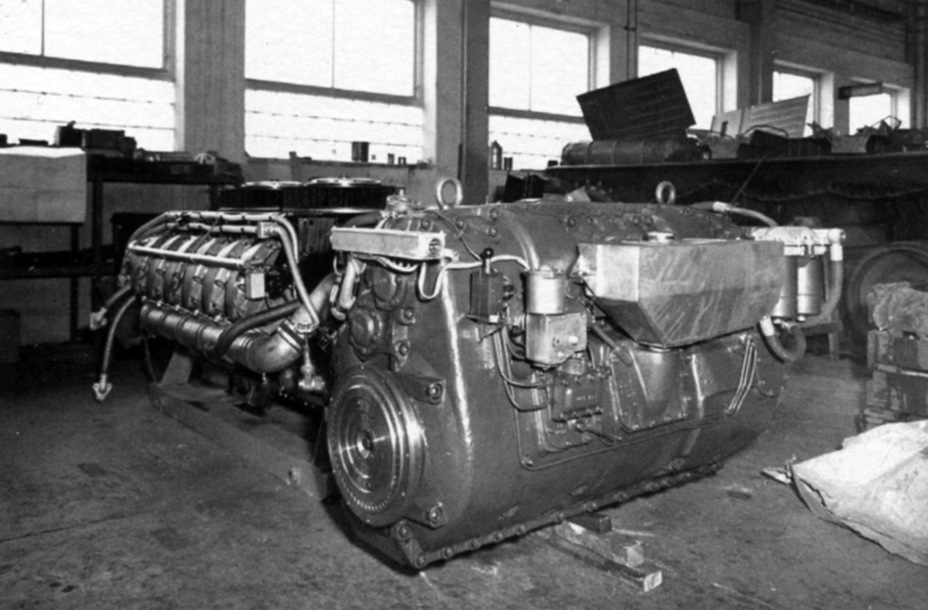
The heavy tank design received a name with which it would enter history in 1956: KRV or Kranvagn (self propelled crane). Berge supervised the project on KATF's behalf, alongside Landsverk's chief engineer, Bushgerr. It was decided that the SFA F 12 810 hp engine would be used instead of American ones. Unlike the tank, it existed in metal since 1955 and was undergoing trials.
In 1957, Landsverk finally began assembling their tank. This was the first tank built from scratch since 1944. As a result of constant redesigns, the mass of the tank reached 45 tons. Compared to the 50 ton Centurion which was still called a medium tank, it was rather slim. The length of the hull grew to 6.75 meters, the width was 3.05 meters, and the height was 2.66 meters.
As far as the mass and height goes, those measurements are still theoretical. Bofors never finished development of the turret or armament. The KRV was tested as a chassis which was later equipped with a dummy turret. The chassis wasn't bad. The vehicle had a respectable 145 mm of front armour, which was also sloped. As tests showed later, the agility was also good. The vehicle had a top speed of 60 kph, almost twice as fast as a Centurion.
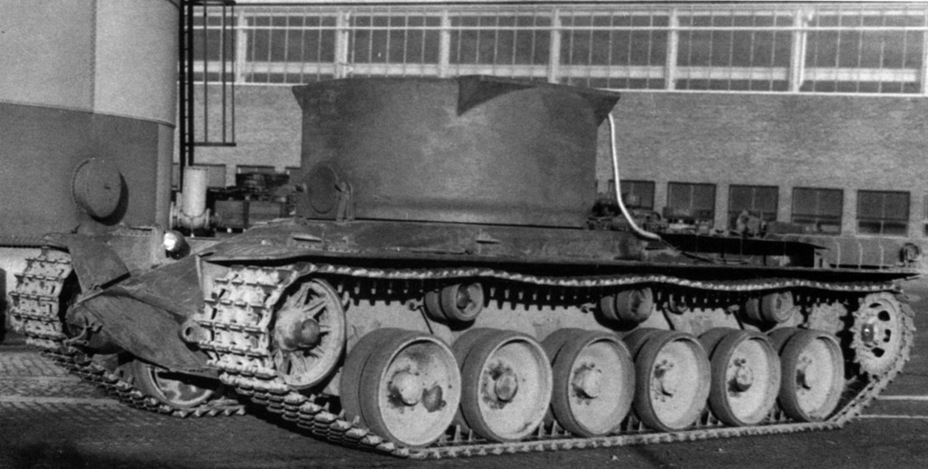
The experimental KRV with number 24 was sent to Norrland in October of 1957 and began trials along the AKV SPG chassis. Meanwhile, the military was scratching their heads at what to do with the tank. Unlike the chassis, the turret wasn't doing too well. There was also an idea of using British or French 150 mm guns, but the idea was rejected.
The idea of installing a Centurion Mk.10 turret on a KRV chassis was also raised. This hybrid could exist, since the thickness of the British turret's armour was comparable, and the L7 gun was a worthy weapon. This also resolved the issue of the Centurion's poor mobility. However, that idea was rejected. Sweden began buying Centurion Mk.10 tanks in 1959. 110 of these tanks served in the Swedish army under the index Strv 101.
Despite its sad finale, the KRV was not a complete failure for Swedish tank building. Unlike the AMX 50B, whose only benefit was attracting visitors to the Saumur tank museum, the Swedish chassis could still serve. Initially indexed AKV 151, the SPG on served as the Bandkanon until 2003.
More importantly, Sven Berge used his experience to design the most important project of his life, the Strv S. Components were tested out on the modified KRV and various components from the tank were used on the Strv S. The same goes for the gun. The only real Swedish heavy tank was not a waste of time and money. The KRV is currently stored at the Arsenalen museum, waiting for the museum to expand its exhibition hall so it can be put on display.
Translated by Peter Samsonov. Read more interesting tank articles on his blog Tank Archives.
Источники:
- Materials from the archive of Karl Blomster
- Tankett fm/49 AKV och KRV, Christer Baadstöe, PANSAR 2–2011
- http://tanks.mod16.org
- http://ftr.wot-news.com
- http://ritastatusreport.blogspot.ru






